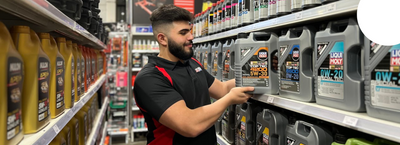Luxury cars often come with premium leather seats that add elegance, comfort, and sophistication to the interior. However, without proper care, leather can wear out, crack, fade, or become stained over time. Protecting your leather seats ensures they remain in top condition, maintaining both the aesthetic appeal and resale value of your vehicle. Here’s how you can keep your luxury car’s leather seats in pristine condition.
1. Regular Cleaning to Prevent Dirt Build-Up
Dirt, dust, and grime can accumulate on leather surfaces, leading to premature wear and a dull appearance. Regular cleaning helps maintain the integrity of the leather.
How to Clean Leather Seats:
- Use a microfiber cloth to wipe down the seats at least once a week to remove surface dust.
- Use a high-quality leather cleaner every 2–4 weeks. Avoid harsh chemicals like bleach or ammonia, as they can damage the leather.
- Apply the cleaner to a microfiber cloth or soft-bristled brush, then gently scrub the seats to lift dirt.
- Wipe off excess cleaner with a clean, dry microfiber cloth.
Tip: Always test the cleaner on a small, hidden section before applying it to the entire seat.
2. Condition the Leather to Prevent Cracking
Leather can dry out over time, especially in hot or dry climates, leading to cracks and stiffness. Using a leather conditioner helps keep the material soft and supple.
How to Condition Leather Seats:
- Choose a high-quality leather conditioner that contains natural oils like lanolin or beeswax.
- Apply a small amount using a microfiber cloth, rubbing it in circular motions.
- Let the conditioner absorb for at least 30 minutes before buffing with a clean cloth.
- Avoid over-conditioning, as it can leave a greasy residue that attracts dust.
How often? Every 2–3 months, or more frequently in extreme weather conditions.
3. Use Seat Covers for Extra Protection
If you want to provide an extra layer of protection without compromising luxury, consider seat covers made from breathable materials like perforated leather or suede.
Why Use Seat Covers?
- Protect against spills, stains, and UV damage.
- Help maintain the original leather’s quality.
- Easy to remove and clean, making maintenance effortless.
If you don’t like the idea of full seat covers, use leather-friendly seat protectors for high-wear areas like the driver’s seat.
4. Park in the Shade or Use Sun Protection
Exposure to direct sunlight can cause leather seats to fade, crack, and dry out over time.
Ways to Protect Leather from Sun Damage:
- Park in a garage or shaded area whenever possible.
- Use a windshield sunshade to block UV rays.
- Tint your windows (if legal in your area) to reduce sun exposure.
- Apply a UV-protectant leather conditioner to shield against sun damage.
Tip: If you live in a hot climate, consider ventilated seat covers to reduce heat buildup.
5. Prevent Stains from Spills and Clothing Transfer
Spills, sweat, and dye transfer from clothing (especially jeans) can stain leather seats.
How to Prevent and Remove Stains:
- Avoid eating or drinking in the car, or use spill-proof containers.
- Clean up spills immediately using a dry microfiber cloth. For sticky spills, dampen the cloth slightly with water.
- Be cautious with new denim jeans, as they can transfer dye onto light-colored leather. If dye transfer occurs, use a leather-safe stain remover.
Tip: If your leather seats are perforated, avoid excessive moisture when cleaning to prevent liquid from seeping inside.
6. Be Mindful of What You Place on the Seats
Sharp objects, heavy items, and rough materials can scratch or puncture leather seats.
How to Avoid Damage:
- Do not place keys, tools, or sharp-edged objects directly on the seats.
- If you carry pets, use a pet seat cover or a designated pet seat protector to prevent scratches from claws.
- Encourage passengers to avoid sliding into the seats aggressively, as this can cause unnecessary wear.
7. Maintain Proper Humidity Levels in Your Car
Leather can dry out in low humidity and become too moist in high humidity, leading to mold growth.
How to Maintain a Balanced Humidity Level:
- Use a car dehumidifier if you live in a humid climate.
- If your climate is dry, use a leather-safe moisturizer periodically.
- Avoid leaving windows open during damp weather to prevent excess moisture buildup.
8. Schedule Professional Detailing
While regular cleaning and conditioning help maintain your leather seats, professional detailing can give them a deep clean and restore their original shine.
How Often Should You Get Professional Leather Treatment?
- Every 6–12 months, depending on your usage and climate conditions.
- If your leather starts to look dull or worn, consider a professional restoration service.
Final Thoughts
Leather seats are a luxurious feature in high-end cars, but they require proper care to keep them in top condition. By following these simple maintenance tips—regular cleaning, conditioning, using sun protection, and avoiding stains—you can ensure that your leather seats stay elegant, soft, and damage-free for years to come.
Taking care of your leather seats not only enhances the driving experience but also preserves the value of your luxury car. Invest in proper maintenance now to enjoy long-lasting, pristine leather interiors!









